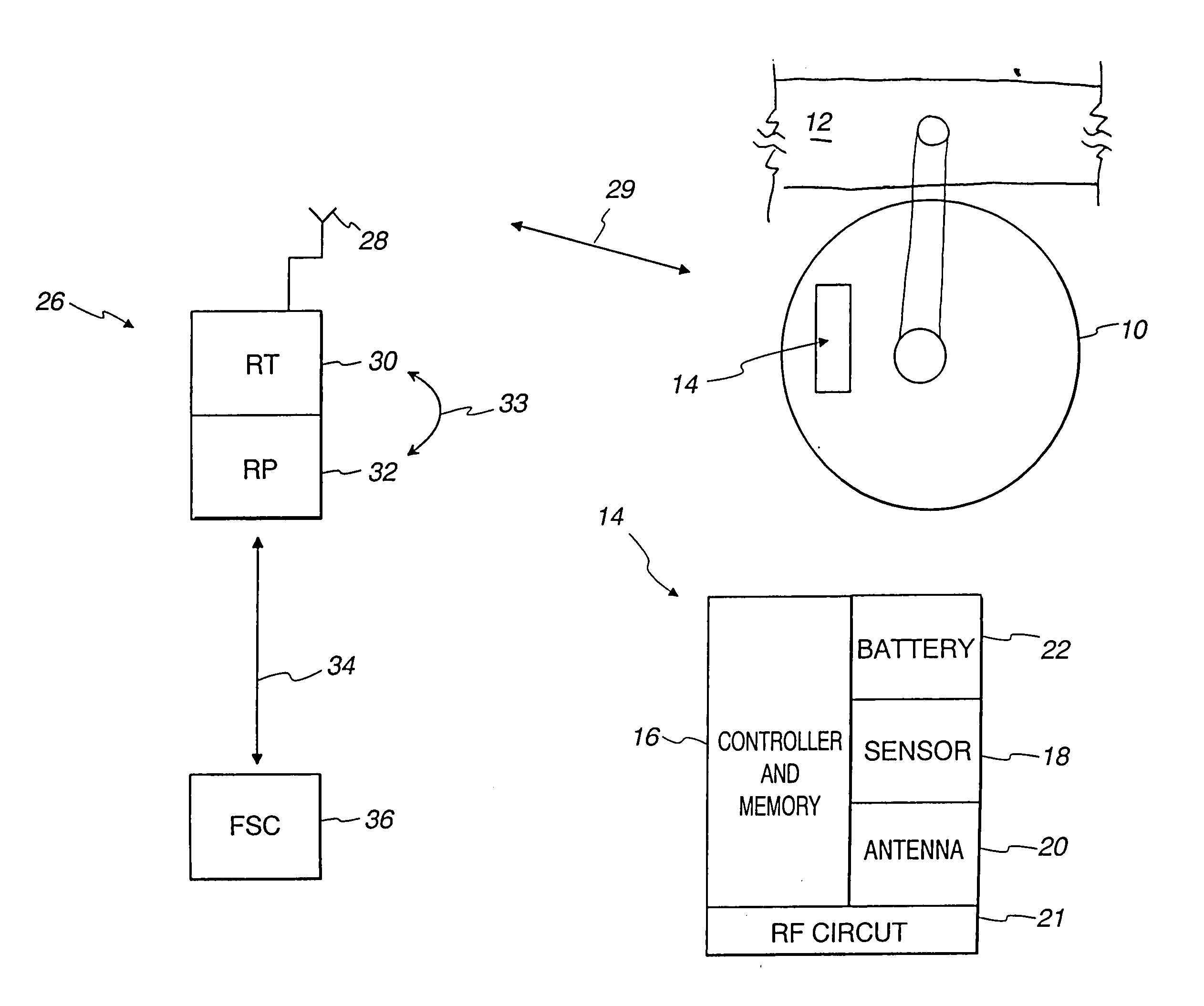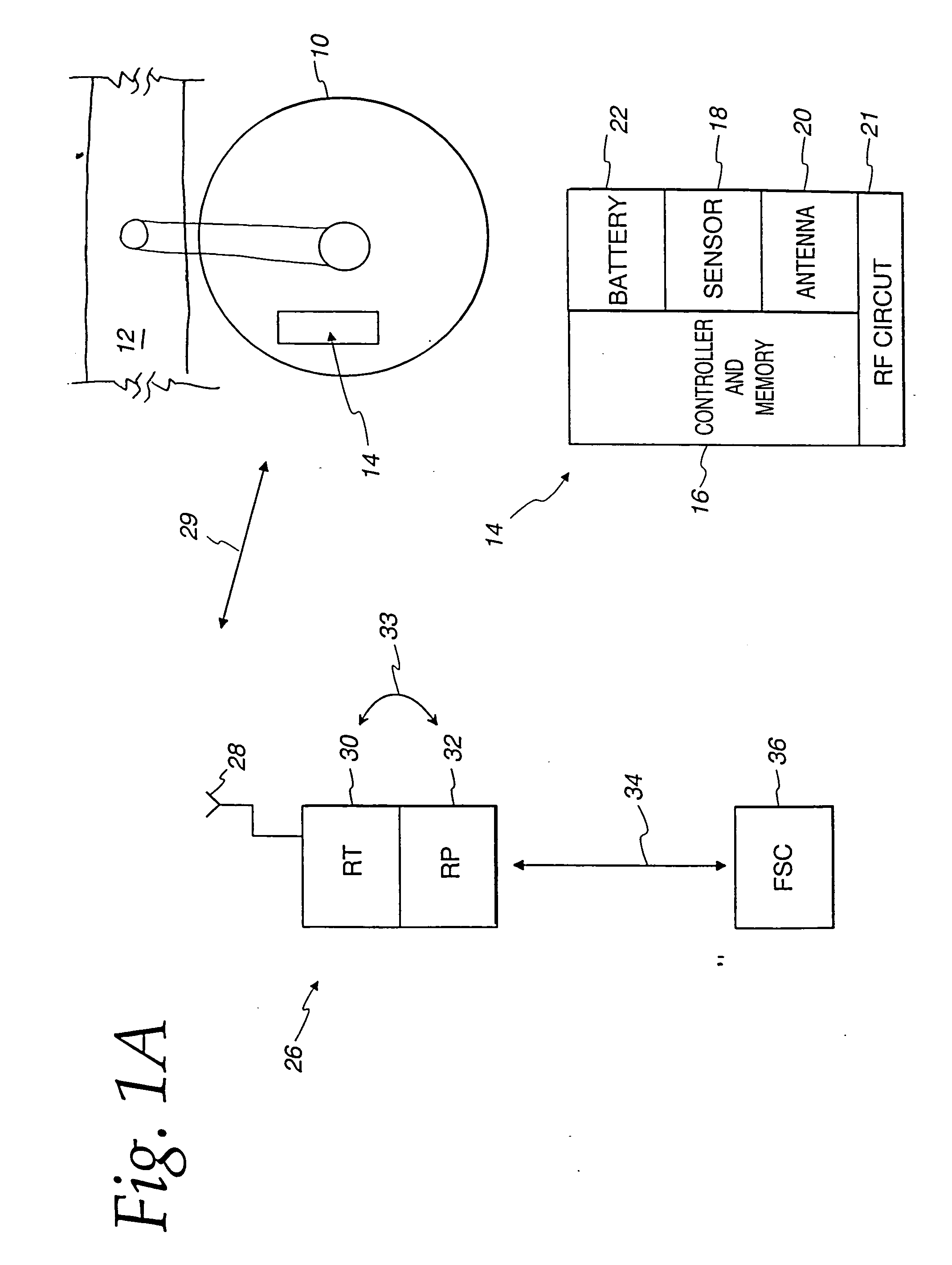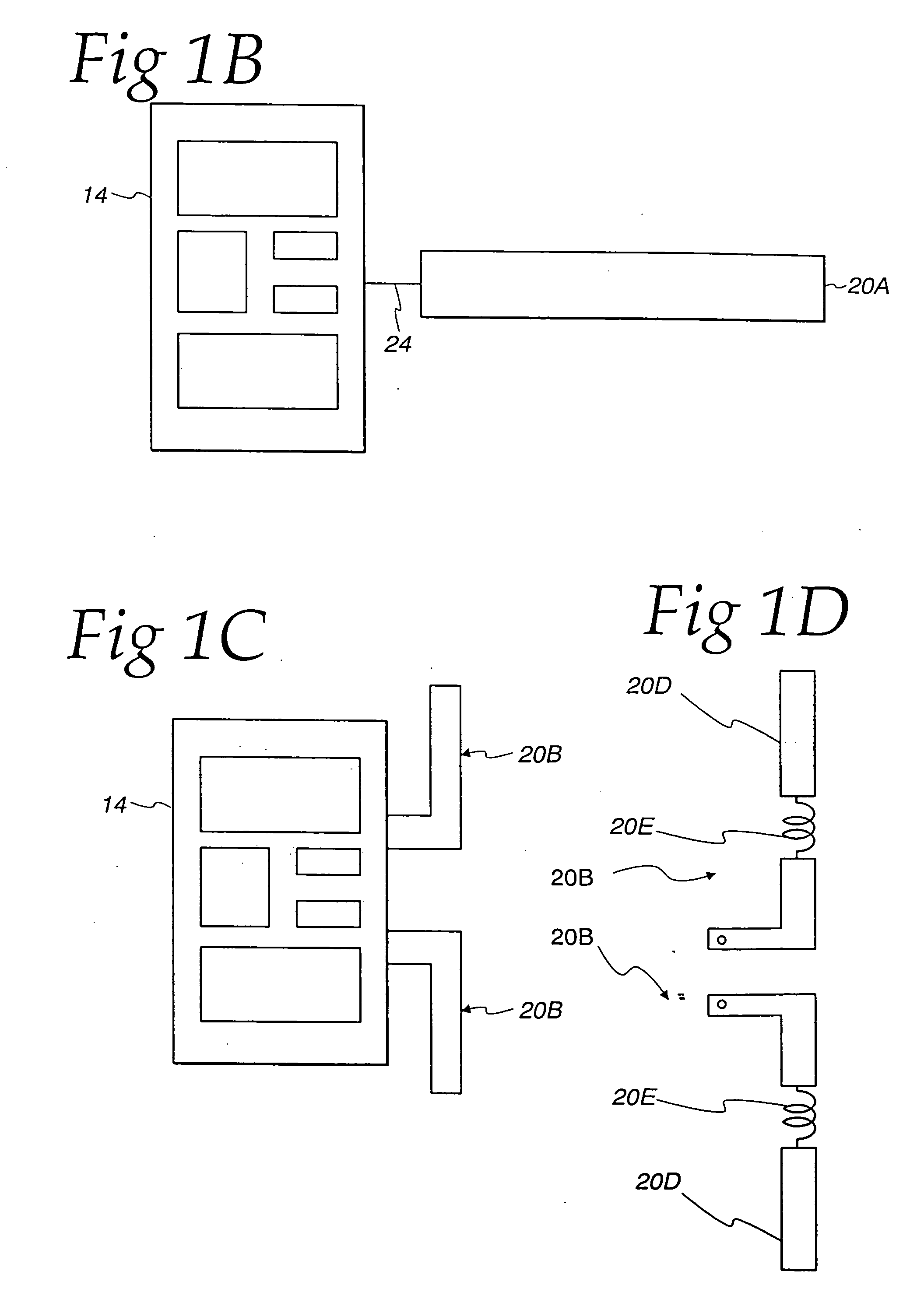System for conserving battery life in a battery operated device
a battery operated device and battery technology, applied in the field of system for conserving battery life, can solve the problems of inductive magnetic coupling or capacitive coupling, requiring long coil windings, and requiring major modifications in the tire construction and assembly process, so as to achieve the effect of conserving battery life in any battery operated devi
- Summary
- Abstract
- Description
- Claims
- Application Information
AI Technical Summary
Benefits of technology
Problems solved by technology
Method used
Image
Examples
Embodiment Construction
[0061] Illustrated in FIG. 1A is a block diagram of one embodiment of the Electronic Tire Management System (ETMS). A tire tag 14 is located within a tire 10 mounted on a vehicle 12. Various methods of attaching the tire tag 14 to the interior of the tire 10 have been described in various patents and related applications, including U.S. Pat. No. 5,500,065 entitled “Method for Embedding a Monitoring Device Within a Tire During Manufacture”; U.S. Pat. No. 5,562,787 entitled “Method of Monitoring Conditions of Vehicle Tires”; U.S. Pat. No. 5,573,610 entitled “Tires Containing a Monitoring Device for Monitoring an Engineering Condition Therein”; U.S. Pat. No. 5,573,611 entitled “Method of Monitoring Conditions of Vehicle Tires and Tires Containing a Monitoring Device Therein”; and U.S. Pat. No. 5,971,046, filed Sep. 17, 1997, and entitled “Method and Apparatus for Bonding an Active Tag to a Patch and a Tire”; all commonly assigned to the assignee of the present invention and all of whic...
PUM
 Login to View More
Login to View More Abstract
Description
Claims
Application Information
 Login to View More
Login to View More - R&D
- Intellectual Property
- Life Sciences
- Materials
- Tech Scout
- Unparalleled Data Quality
- Higher Quality Content
- 60% Fewer Hallucinations
Browse by: Latest US Patents, China's latest patents, Technical Efficacy Thesaurus, Application Domain, Technology Topic, Popular Technical Reports.
© 2025 PatSnap. All rights reserved.Legal|Privacy policy|Modern Slavery Act Transparency Statement|Sitemap|About US| Contact US: help@patsnap.com



